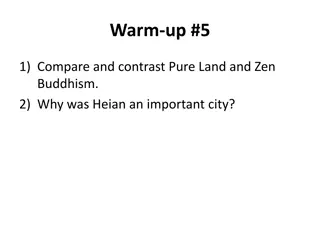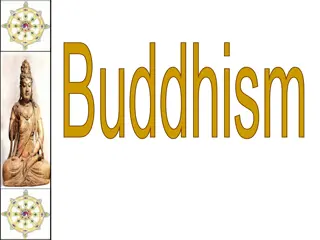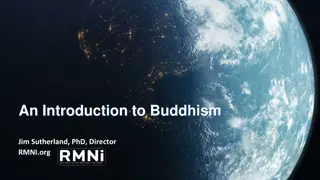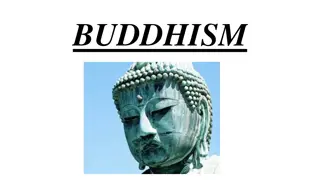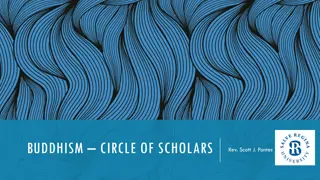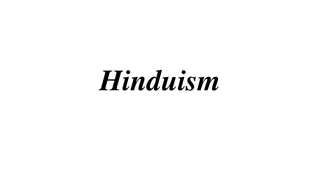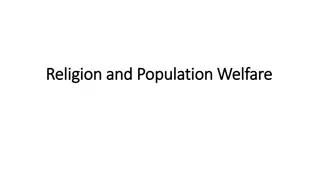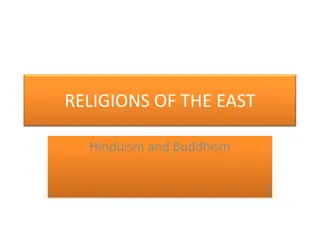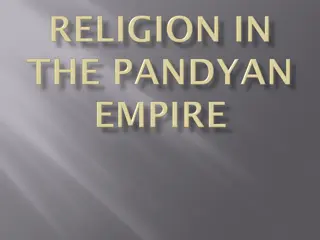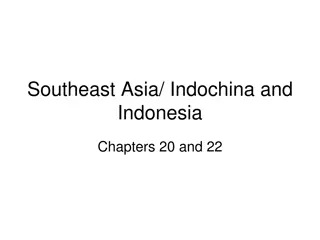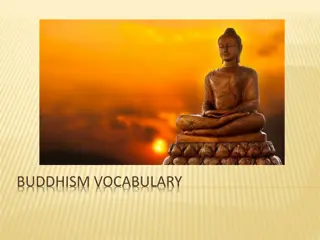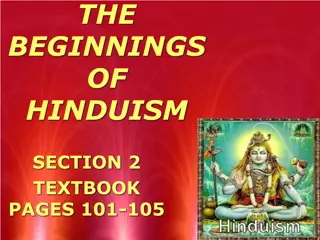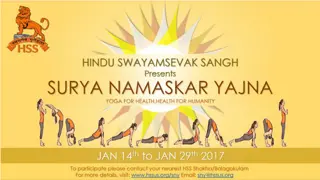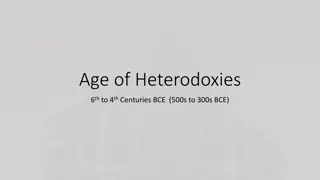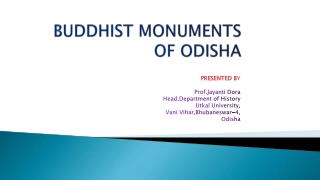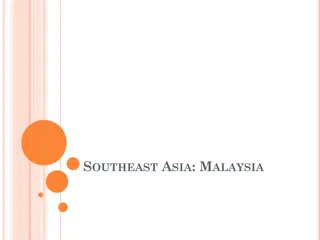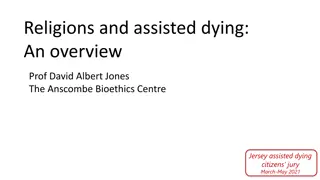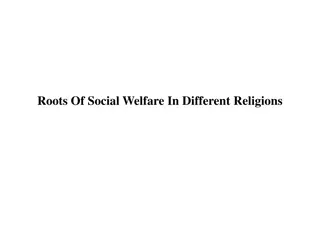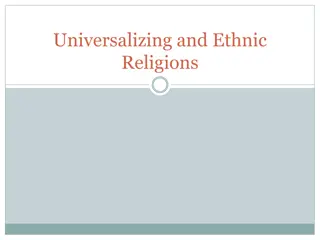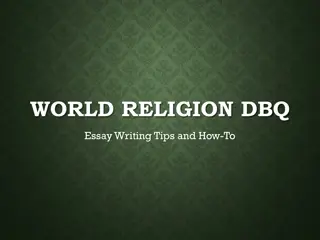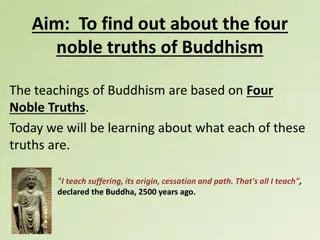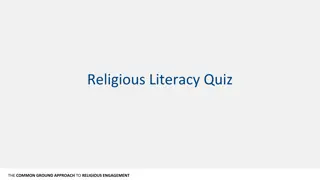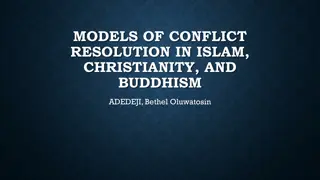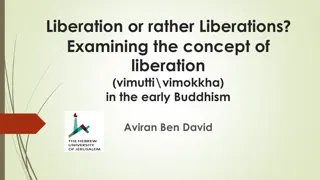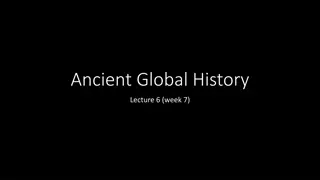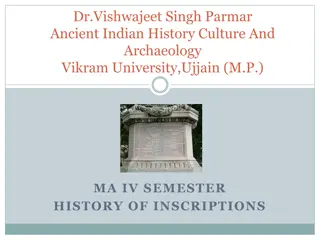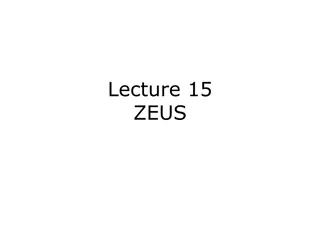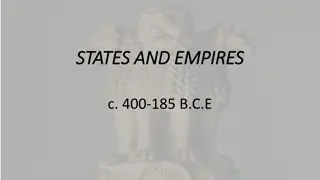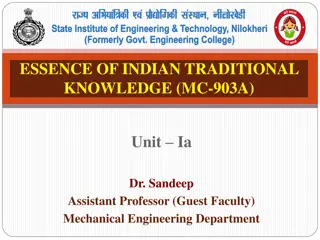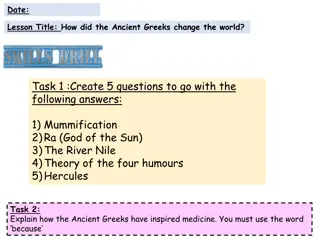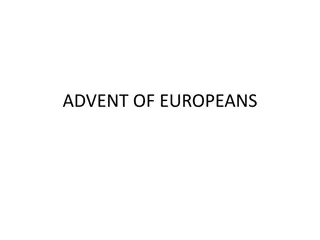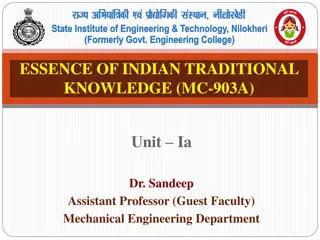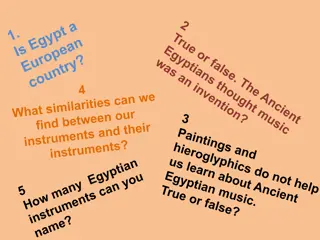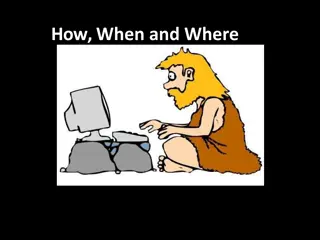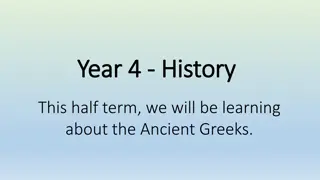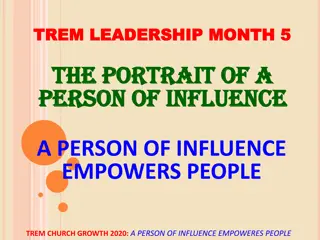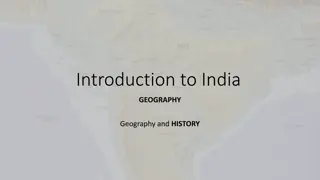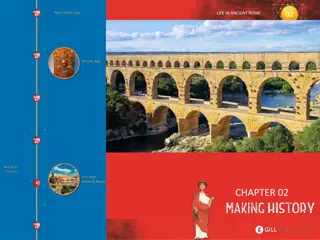Development and Influence of Hinduism and Buddhism in Ancient India
Explore the development and impact of Hinduism and Buddhism in ancient India from the codification of religious and cultural traditions like the Vedas and Brahman in Hinduism to the teachings of Siddhartha Gautama (Buddha) emphasizing the Four Noble Truths and Eightfold Path. Discover how these religions shaped social structures and influenced beliefs across India and beyond.
Download Presentation

Please find below an Image/Link to download the presentation.
The content on the website is provided AS IS for your information and personal use only. It may not be sold, licensed, or shared on other websites without obtaining consent from the author. Download presentation by click this link. If you encounter any issues during the download, it is possible that the publisher has removed the file from their server.
E N D
Presentation Transcript
AP WORLD HISTORY PERIOD 2: 600 BCE 600 CE Organization and Reorganization of Human Societies
Key Concepts For Period 2: 600 BCE600CE 2.1 Development & Codification of Religious & Cultural Traditions 2.2 Development of States and Empire 2.3 Emergence of Trans-regional Networks of Communication and Exchange
Key Concept 2.1 Development & Codification of Religious & Cultural Traditions Religion provides: Community bonds & moral and ethical codes to follow Reinforces social stratification Merged with political rulers to justify their reign Differences lead to conflict Remember 2 Religions began in Period 1 Judaism & Hinduism
Key Concept 2.1 Development & Codification of Religious & Cultural Traditions Hinduism India (spread to SE Asia) Vedas brought by Aryans (Indo-Europeans) Codified in Sanskrit 500BCE No founder, cultural diffusion Brahman supreme soul Karma (actions), Dharma (duties), Reincarnation (rebirth), Moksha (one with universe) Caste System rigid social system Patriarchal Major continuity in India
Key Concept 2.1 Development & Codification of Religious & Cultural Traditions Buddhism India 500 BCE Founder = Siddhartha Gautama (Buddha) Developed from Hinduism 4 Noble Truths (suffering and desire) & 8 Fold Path ( right life ) Nirvana accessible to everyone in this lifetime Accepted karma, dharma, and reincarnation, rejected caste system Appealed to poor, equality of believers, offered monastic life Universal Religion seeking converts Spread through Emperor Asoka of the Mauryan Empire, converted to Buddhism Spread East to China, Korea and Japan along Silk Roads and Indian Ocean Trade Mahayana (Buddha as a God) vs. Theravada (original)
Key Concept 2.1 Development & Codification of Religious & Cultural Traditions Confucianism China, Warring States Period, 500 BCE Founder: Confucius Filial Piety respect for elders 5 Key Relationships (superior & inferior) Patriarchal Civil Service Exam started by Han (education, merit based bureaucracy) Provided social order and stability to China, embraced by Chinese government; continuity in China
Key Concept 2.1 Development & Codification of Religious & Cultural Traditions Daoism China, Warring States Period, 500 BCE Founder: Laozi Harmony with Nature Balance (yin and yang) Disengage and just be Profound effect on Chinese culture (medicine, poetry, metallurgy, architecture)
Key Concept 2.1 Development & Codification of Religious & Cultural Traditions Judaism Began in Middle East Founder: Abraham 1stMonotheistic Covenant/agreement with God Torah (holy book) codified 500 BCE Hebrew communities were conquered which led to diaspora (scattered)
Key Concept 2.1 Development & Codification of Religious & Cultural Traditions Christianity Founder: Jesus 30 CE Developed from Judaism Equality of believers, appeals to poor and women, offered a monastic life Universal religion, spread through missionaries, trade, Roman Roads 1stpersecuted by Romans, become official religion of empire in 380 CE Constantine Spreads throughout Mediterranean Region
Key Concept 2.1 Development & Codification of Religious & Cultural Traditions Greco-Roman Philosophy 500 BCE Questioned range of ideals Science, math, elements, gods, universe, reasoning, logic, Socratic Method, Scientific Method, Socrates, Plato, Aristotle
Key Concept 2.1 Development & Codification of Religious & Cultural Traditions Axial Age Theory New religious beliefs develop across the world at around the same time Confucianism, Buddhism, Daoism, and Greco-Roman Philosophy Christianity 400 years later Islam 1000 years later
Key Concept 2.1 Development & Codification of Religious & Cultural Traditions Animism and polytheism used outside core civilizations, focused on nature, shamanism (spirit guides) Greco-Buddhism = syncretism, blending of two cultures (Alexander the Great)
Key Concept 2.2 Development of States and Empire China Zhou (Mandate of Heaven, longest dynasty, ends in 256 BCE and leads to Warring States Period) Qin (221-206 BCE) Short but important Shi Huangdi 1stEmperor, Unified China for 1sttime Legalism (Harsh) Centralized government Began Great Wall (finished by Ming) Standardized weights and measurements Tomb of Terracotta Warriors
Key Concept 2.2 Development of States and Empire China Han (206 BCE 220 CE) Golden Age peace, stability, achievements Centralized government Confucianism some social mobility Civil Service Exam merit based bureaucracy Began Silk Roads, linked to Europe Capital city Chang an Patriarchy Merchants looked down on Achievements: coined $, paper, clocks, compass
Key Concept 2.2 Development of States and Empire India (usually politically decentralized, empire is NOT the norm) Mauryan (322 185 BCE) Founder: Chandragupta Maurya united subcontinent Larger of 2 early empires Grandson Asoka converted to Buddhism and spread religion; Rock Pillars Gupta (320 600 CE) Golden Age (Arabic Numerals, concept of zero, base 10) Hinduism and Sati (patriarchy)
Key Concept 2.2 Development of States and Empire Mediterranean Empires Persian Empires (present day Iran) Achaemenid (550 330 BCE) Cyrus the Great built largest empire in the world Zoroastrianism; religiously tolerant Royal Road System (1,600 miles) Strong military, used satraps (regional leaders) to help rule Conquered by Alexander the Great Parthian (247-224 CE) Center of trade on Silk Road, often fought with Roman Empire Sassanid (224 651 CE) Last Pre-Islamic Persian Empire Considered world power with Rome/Byzantines
Key Concept 2.2 Development of States and Empire Mediterranean Empires Greece City-states, not unified, many types of government but had common language and religion Geography: Mountainous, Importance of the seas and trade Athens (Democracy, philosophy, Coliseum) vs. Sparta (totalitarian oligarchy, military) City-states unite to defeat Persia Peloponnesian Wars (Athens vs. Sparta 431-404 BCE) Wars weaken Greece and make way for Phillip II of Macedon (Alexander the Great s Father)
Key Concept 2.2 Development of States and Empire Mediterranean Empires Hellenistic Empire (740 146 BCE) Alexander the Great Conquered Greece, Egypt, Persia and Northern India Golden Age (libraries, geometry, cities Alexandria, Egypt) Syncretism: Greco-Buddhism in South Asia Died at age of 33 in 323 BCE Empire broke up into 3 pieces
Key Concept 2.2 Development of States and Empire Mediterranean Empires Roman Empire Began with Romulus & Remus Republic (citizens have say in government) (500 BCE 30 BCE) with Patricians vs. Plebeians and the Senate Punic Wars vs. Carthage (Hannibal) Julius Caesar assumed dictatorship 48 BCE Augustus Caesar and the Pax Romana (Golden Age) Law (12 Tables), engineering (roads, aqueducts), Silk Road, use of slavery Christianity becomes official religion 380 CE
Key Concept 2.2 Development of States and Empire American Empires Mayan Empire (250 900 CE) City-states in Mesoamerica (central America) Achievements: calendar, step pyramids, glyphs, astronomy, terrace farming Teotihuacan One of the biggest cities in classical era Traded with Mayan Human sacrifice Complex bureaucracy and pyramids Moche: Andean (100 800 CE) Gold, architecture, irrigation, terrace farming, human sacrifice
Key Concept 2.2 Development of States and Empire Common Attributes of Classical Empires Large empires required advanced bureaucracies 1stmajor trade centers developed (cities) glorified empires Food production was key Widespread slavery Patriarchy and social hierarchies based on occupation Comparisons of Empires Maya & Gupta (concept of zero) Rome & Han (Silk Roads) Greeks & Romans (dependence on slavery) Mayans & Greeks (city-states)
Key Concept 2.2 Development of States and Empire Common Attributes of Classical Empires Large empires required advanced bureaucracies 1stmajor trade centers developed (cities) glorified empires Food production was key Widespread slavery Patriarchy and social hierarchies based on occupation Comparisons of Empires Maya & Gupta (concept of zero) Rome & Han (Silk Roads) Greeks & Romans (dependence on slavery) Mayans & Greeks (city-states)
Key Concept 2.2 Development of States and Empire Comparing Roman and Han Empire Rome Han Heavy reliance on slavery Social Structure Heavy reliance on peasants (respected) Centralized Political Centralized, merit based bureaucracy based on civil service exams Trade along Silk Road and Mediterranean Sea Economic Trade along Silk Roads and Indian Ocean Trade Absorbed foreign religion in later years (Christianity) Achievements in law & engineering (roads) Culture Absorbed foreign religion in later years (Buddhism) Achievements include roads & civil service exam
Key Concept 2.2 Development of States and Empire Collapse of Classical Empires Over-extension of borders Internal disruptions Breakdown of imperial authority; political corruption Failing economies Peasant revolts against landlords (Han - Yellow Turban Revolt); resistance to high taxes External Invasions Rival empires and nomadic 476 CE Roman Empire (Huns, Goths, Vandals) 220 CE Han (Xiongnu) China comes back after collapse; Rome does not Causes of Decline in Americas is unknown
Key Concept 2.3 Emergence of Transregional Networks of Communication and Exchange Silk Roads Land based trade routes Chinese monopoly on silk (desirable and expensive) Goods Traded From E. Asia to W: Silk, horses, spices, furs, rice,, porcelain From S Asia to E & W: cotton, spices, sandal wood, rice From C. Asia to E, W & S: dates, almonds, fruit, camels, horses From points west (Med. Sea): glass, gold, olive oil, perfumes Technology: qanat system (irrigation, transports water from below ground to surface in arid regions C. Asia to SW Asia) Buddhism spreads from India to China to Korea to Japan Disease spreads (Black Death/Plague)
Key Concept 2.3 Emergence of Transregional Networks of Communication and Exchange Indian Ocean Trade Largest sea routes until 1400s Connected SE Asia, China, Africa, Middle East and South Asia Depended on monsoon winds New technology Dhows small but seaworthy trading ships used by Arab merchants Lateen sail - triangular
Key Concept 2.3 Emergence of Transregional Networks of Communication and Exchange Trans-Saharan Trade Routes North Africa to Mediterranean coastal cities Goods Traded From Africa: Gold , salt, ivory, animal hides and slaves From Med.: dates, cotton, dyes, cloth, leather, glass Introduction of camel 1stCentury CE, saddle 300 CE
Key Concept 2.3 Emergence of Transregional Networks of Communication and Exchange Other Notable Trade Routes Mediterranean Sea (Greeks, Phoenicians, Burburs) Sub-Saharan Trade Routes (Bantus connect sub- Saharan Africa to E. Africa) Black Sea Who s Missing? The Americas Why? Smaller scale trade, fewer large domestic animals, no wheel, geography N-S made trade difficult Mayan and Teotihuacan in Mesoamerica and within Moche
Period 2 Review Questions 1. Monasticism is a characteristic of which of the following religions? A. Judaism B. Hinduism C. Confucianism D. Buddhism
Period 2 Review Questions 2. In which of these societies were merchants and traders placed in a lower social class than farmers and artisans A. Han China B. India C. Japan D. Rome
Period 2 Review Questions 3. After the Peloponnesian War, the Macedonians took control of Greece and spread Greek culture throughout much of the known world under the leadership of A. Julius Caesar B. Hannibal C. Alexander the Great D. Pericles
Period 2 Review Questions 4. In China, Confucianism emphasized the idea that A. Equality should exist among all members of society B. Salvation could be attained by prayer, meditation and good deeds C. Harmony could be achieved by the proper behavior of each member of the family or society D. People are fundamentally evil and need to be led by a strong central government
Period 2 Review Questions 5. In comparing the Han Dynasty with the Roman Empire, which of the following statements is NOT accurate? Both the Han Dynasty s and Roman Empire s economies suffered as a result of military spending While Rome was successful at spreading its culture across a wide area, the Han were unable to diffuse their culture to neighboring lands While both societies were run by centralized governments, Rome gave significant autonomy to local officials While the Chinese were able to re-establish their imperial empire, Rome was never restored to its former status. A. B. C. D.
Period 2 Essay Question Compare the political and social impacts of two of the following belief systems. Hinduism, Confucianism, Christianity
Period 2 Essay Question Compare the reasons for and the outcomes of the fall of TWO of the following classical civilizations The Roman Empire Han China Gupta India
Period 2 Essay Question Compare the political and cultural characteristics of two classical empires.
Period 2 Essay Question Analyze the cultural and political changes and continuities in ONE of these civilizations during the early classical era from 1,000 to 1BCE Rome China



